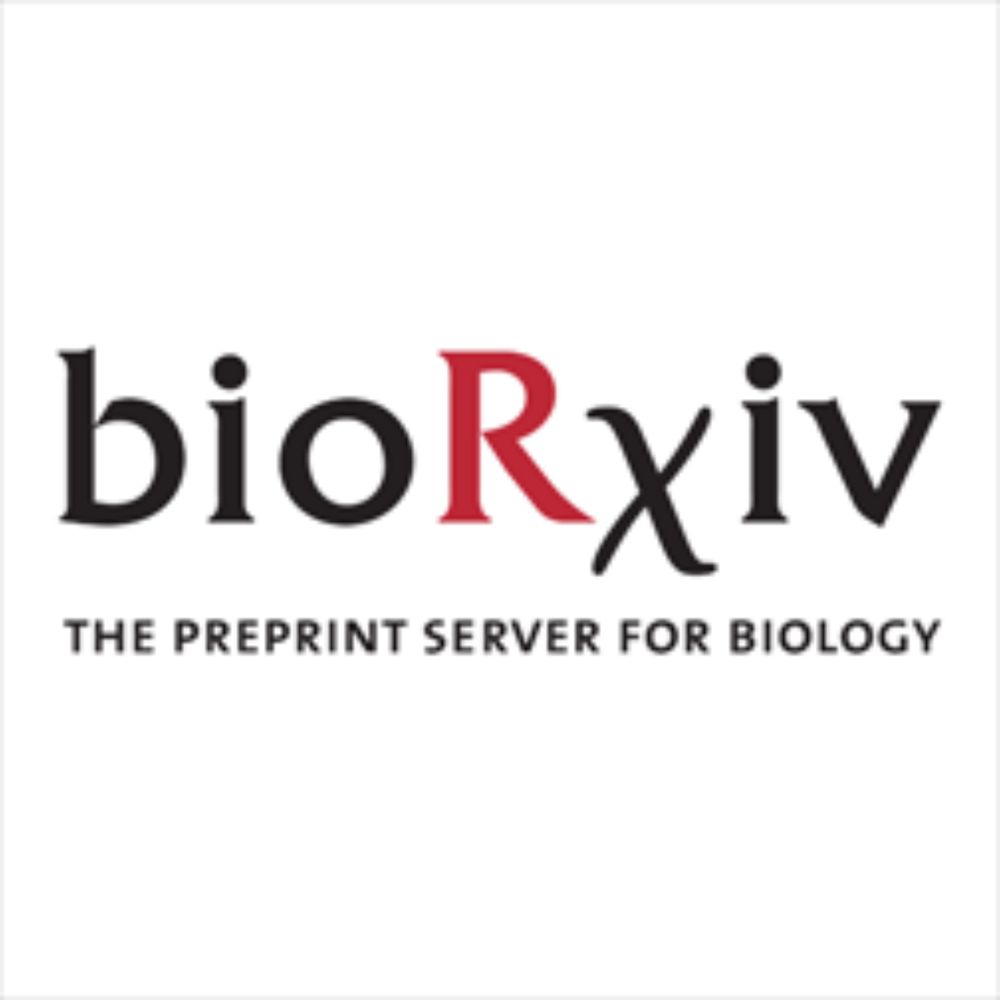pubs.acs.org/doi/10.1021/... IM2Deep might win best algorithm name of 2025
15.07.2025 19:59 — 👍 6 🔁 1 💬 1 📌 0
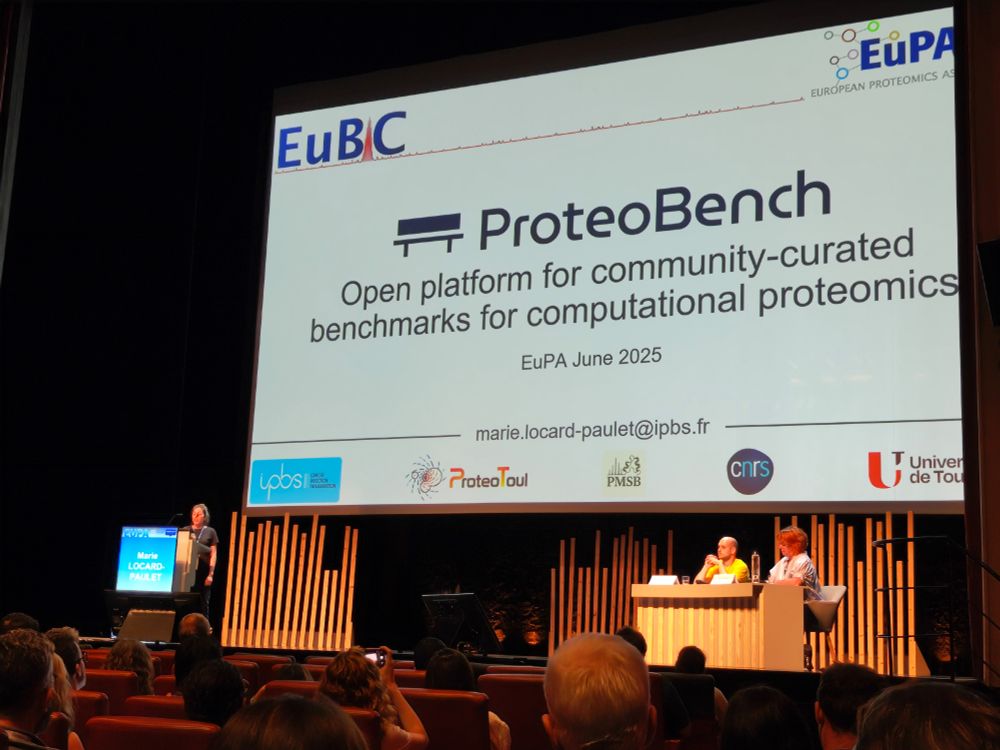
Conference stage with Marie Locard-Paulet, the chairs, and the opening slide in the background.
Marie Locard-Paulet presenting the EuBIC-MS #ProteoBench project at the #EuPA2025 conference.
👉 Learn more about our open proteomics software benchmarking platform at proteobench.readthedocs.io.
#Proteomics #Bioinformatics #Benchmarking
19.06.2025 12:13 — 👍 19 🔁 5 💬 0 📌 1
MLMarker is live! This ML-tool predicts tissue similarity and uncovers biomarkers from your proteomics data. It was trained on public data of healthy human tissues.
Preprint & app: www.biorxiv.org/content/10.1...
Let's chat at #EuPA2025 - Award session (Wednesday) & poster session (Thursday)!
16.06.2025 09:31 — 👍 14 🔁 5 💬 1 📌 0

Plenary talk
Lennart Martens
Rise of the Robots – definitely artificial, somewhat intelligent
Keynote lecture
Tim Van Den Bossche
Improving metaproteomics data analysis with the Ghent Metaproteomics Toolbox
Oral presentations
Harikrishnan Ramadasan
Bridging expert curation and LLMs for automated metadata extraction in lesSDRF 2.0
Robbe Devreese
Collisional cross-section prediction for peptides and small molecules: covering all bases (and bridging the gap?)
Robbin Bouwmeester
Challenges and opportunities in modification searches for DIA proteomics
Educational session
Lennart Martens
No more surprises: AI predictions in MS DDA and DIA data interpretation
Robbin Bouwmeester
A deep dive into limitations of modification searching for DIA data
Caroline Jachmann
Fantastic PTMs and how (not?) to find them using msqrob2PTM -
a real-life journey
Poster presentations
Enrico Massignani
Overcoming challenges in non-canonical protein searches with OpenProt and ionbot
Pathmanaban Ramasamy
Assessing the relation between protein phosphorylation, AlphaFold3 models and conformational variability
Toon Callens
Advancing tissue prediction using read-based DNA methylation modelling towards a multi-omics integration
Tine Claeys
MLMarker: Data-driven discovery of tissue similarity and biomarkers
Alireza Nameni
Enhancing peptide-spectrum match identification with non-linear models in Mokapot: Assessing complexity, overfitting, and false discovery rates
Tim Van Den Bossche
The Metaproteomics Initiative: An international community by and for metaproteomics researchers
Award presentations
Tine Claeys
Bioinformatics Award
Tim Van Den Bossche
Vision & Commitment Award
From PTMs to proteins, from metadata to metaproteomics. CompOmics has got you covered at #EuPA2025!
16.06.2025 08:05 — 👍 22 🔁 8 💬 0 📌 0
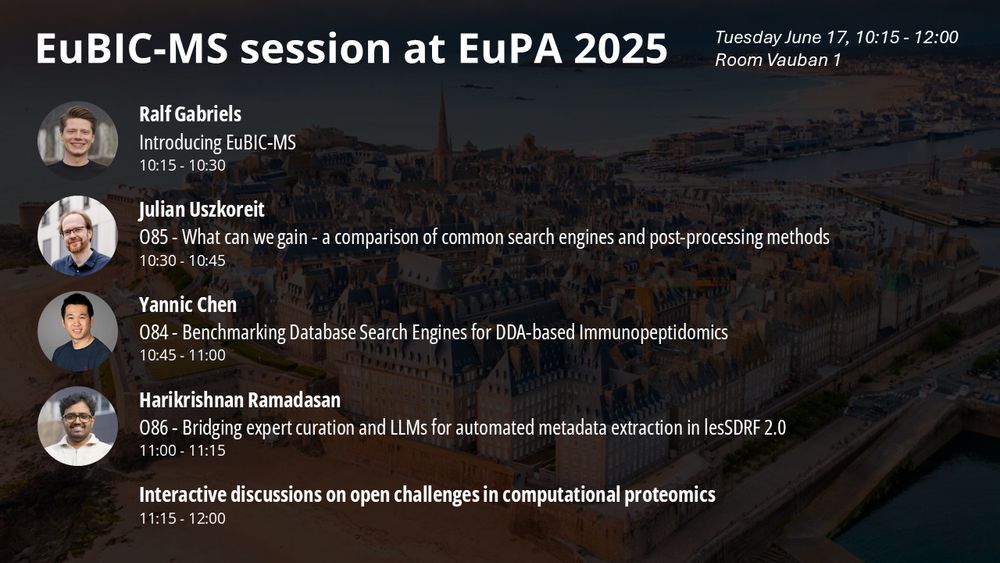
EuBIC-MS session at EuPA 2025
Tuesday June 17, 10:15 - 12:00, Room Vauban 1
Ralf Gabriels
Introducing EuBIC-MS
10:15 - 10:30
Julian Uszkoreit
O85 - What can we gain - a comparison of common search engines and post-processing methods
10:30 - 10:45
Yannic Chen
O84 - Benchmarking Database Search Engines for DDA-based Immunopeptidomics
10:45 - 11:00
Harikrishnan Ramadasan
O86 - Bridging expert curation and LLMs for automated metadata extraction in lesSDRF 2.0
11:00 - 11:15
Interactive discussions on open challenges in computational proteomics
11:15 - 12:00
Join us in Saint-Malo for the #EuBIC-MS session at #EuPA2025!
After a short introduction, we have three exciting talks lined up, as well as an interactive discussion on open issues in computational proteomics.
@eupaproteomics.bsky.social @uszkoreitju.bsky.social @harirmds.bsky.social
13.06.2025 13:56 — 👍 9 🔁 4 💬 1 📌 2

BEFORE THE BATHROOM SCALE WAS INVENTED, THE ONLY
WAY TO WEIGH PEOPLE WAS MASS SPECTROMETRY.
Love today’s #xkcd comic on
#MassSpec
🤣
27.05.2025 05:54 — 👍 193 🔁 58 💬 4 📌 5

Collisional cross-section prediction for multiconformational peptide ions with IM2Deep www.biorxiv.org/cont...
---
#proteomics #prot-preprint
23.02.2025 14:00 — 👍 5 🔁 2 💬 0 📌 0
What excites me most is that it introduces the first ML-based solution for peptide multiconformers. But that’s not all! We also demonstrate a substantial performance boost for uniconforming peptides.
Our findings are clear: multiconformer peptides cannot be overlooked when predicting CCS!
23.02.2025 13:35 — 👍 5 🔁 1 💬 0 📌 0

TIMS2Rescore: A Data Dependent Acquisition-Parallel Accumulation and Serial Fragmentation-Optimized Data-Driven Rescoring Pipeline Based on MS2Rescore
The high throughput analysis of proteins with mass spectrometry (MS) is highly valuable for understanding human biology, discovering disease biomarkers, identifying therapeutic targets, and exploring pathogen interactions. To achieve these goals, specialized proteomics subfields, including plasma proteomics, immunopeptidomics, and metaproteomics, must tackle specific analytical challenges, such as an increased identification ambiguity compared to routine proteomics experiments. Technical advancements in MS instrumentation can mitigate these issues by acquiring more discerning information at higher sensitivity levels. This is exemplified by the incorporation of ion mobility and parallel accumulation and serial fragmentation (PASEF) technologies in timsTOF instruments. In addition, AI-based bioinformatics solutions can help overcome ambiguity issues by integrating more data into the identification workflow. Here, we introduce TIMS2Rescore, a data-driven rescoring workflow optimized for DDA-PASEF data from timsTOF instruments. This platform includes new timsTOF MS2PIP spectrum prediction models and IM2Deep, a new deep learning-based peptide ion mobility predictor. Furthermore, to fully streamline data throughput, TIMS2Rescore directly accepts Bruker raw mass spectrometry data and search results from ProteoScape and many other search engines, including Sage and PEAKS. We showcase TIMS2Rescore performance on plasma proteomics, immunopeptidomics (HLA class I and II), and metaproteomics data sets. TIMS2Rescore is open-source and freely available at https://github.com/compomics/tims2rescore.
Seems reasonable to dedicate my first Bluesky post to the following:
Our latest research, TIMS²Rescore, is now published in Journal of Proteome Research! 🎉
Read it here: pubs.acs.org/doi/full/10....
A huge thanks to all our collaborators for making this happen!
07.02.2025 14:13 — 👍 13 🔁 4 💬 0 📌 0
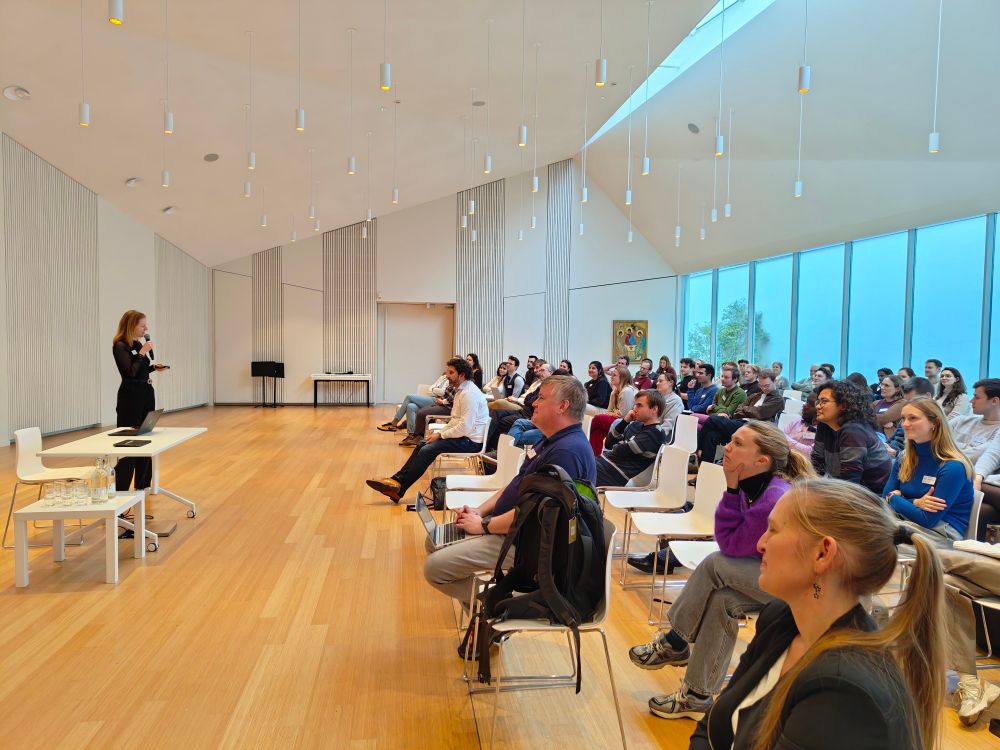
Caroline Jachmann presenting her work in front of the BePAc 2024 audience
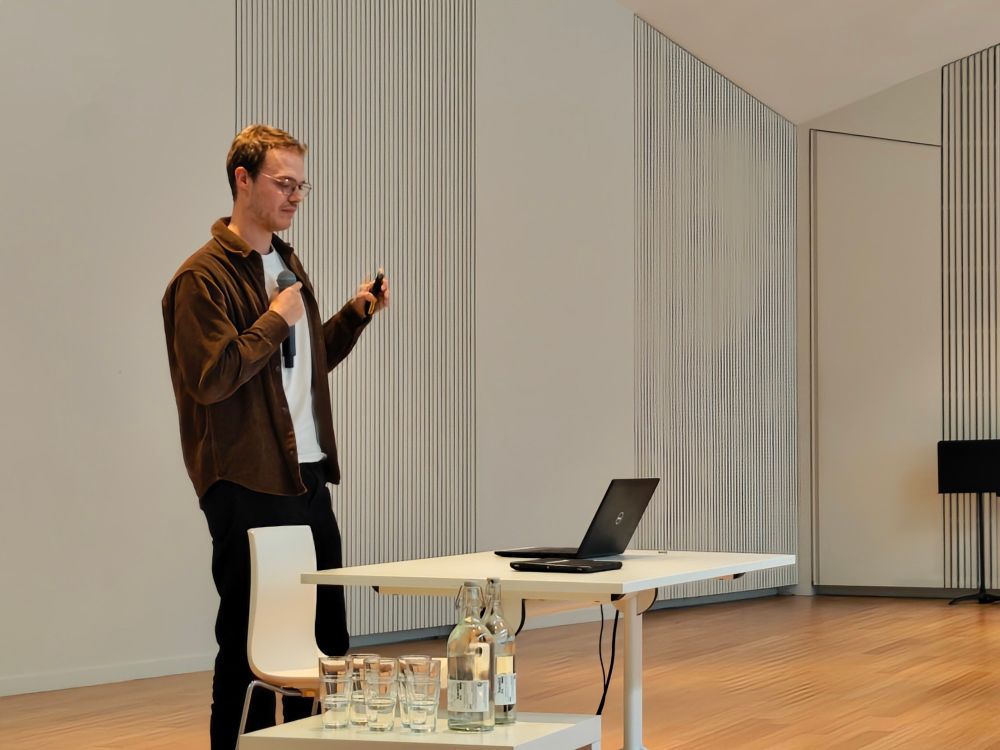
Robbe Devreese presenting his work at BePAc 2024
Today, @robbedevr.bsky.social and @carojachmann.bsky.social presented their work on #IM2Deep and #ProteoBench at #BePAc2024.
Learn more at doi.org/10.1101/2024... and proteobench.readthedocs.io.
06.12.2024 14:52 — 👍 8 🔁 3 💬 0 📌 0
Postdoc @ Küster lab | prev, PhD @ Trost lab | proteomics | chemoproteomics | mass spectrometry | target deconvolution | drug MoA
PhD student in computational biomolecular medicine at CompOmics and TOBI in Ghent
We study host-bacteria interactions using Listeria and MS-based Proteomics with a focus on Ubiquitin-like modifications (e.g. ISG15) and MHC complex peptides.
The Human Proteome Organization (HUPO) is an international scientific organization representing and promoting proteomics through international cooperation and collaborations
Doing proteomics until I still can.
https://github.com/41ison
Data scientist @ Talus Bio.
Kind of into data, proteomics, open source and biology.
Doctoral researcher at Bioinformatics Research Group, FH OÖ - Hagenberg | PROTrEIN Marie-Curie early stage researcher | Computational Proteomics | Bioinformatics | Mass spectrometry | she/her
Jun.-Prof. Medical Bioinformatics @ruhr-uni-bochum.de
Head of Core Unit Bioinformatics (CUBiMed.RUB)
Group leader at PTB Braunschweig and professor at TU Braunschweig working in computational proteomics and metabolomics
#Bioinformatics PhD Student currently focusing on #immunopeptidomics pipeline development @nf-co.re 🧬👨💻
PostDoc in Olsen Group and Arachnid wll-being executive manager. 🕷️🕸️ Working on Spatial Proteomics and extracellular vesicles. 🤗
Ask me about TopDown Proteomics!
Professor of Translational Proteomics - Curious about 🩸proteins and proteomics. SciLifeLab, KTH Royal Institute of Technology and Human Protein Atlas.
PhD student at UniFr - Switzerland
Exploring the depths of autophagy through mass spectrometry-based proteomics




